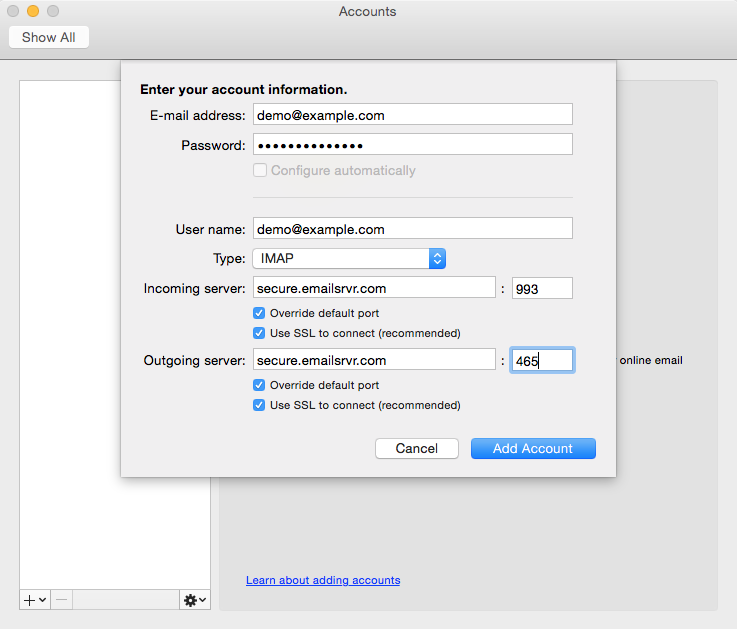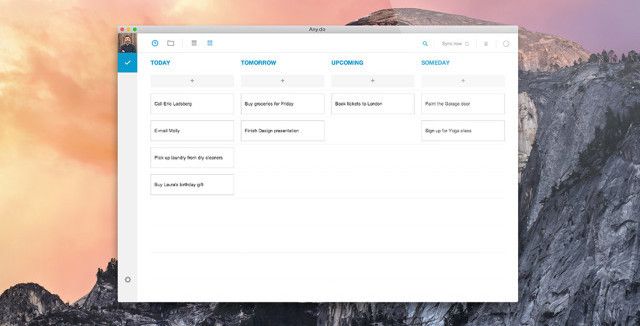Outlook 2011 For Mac Email Wont Send
Question: Q: Unable to send via Outlook for Mac 2011 - but to just one address More Less Apple Footer This site contains user submitted content, comments and opinions and is for informational purposes only.
If you are still having the problem, again go to Mail > Preferences > Accounts > Edit SMTP server list > Advanced and ensure “Allow insecure authentication” is ticked (this option, if available, allows plain password authentication although it is still over a SSL/TLS encrypted connection and so secure). If this stops working again, the following procedure is suggested. • Close Mail • In Finder, choose Go > “Go to folder”, enter ~/Library/Mail/V2/MailData/ or otherwise navigate to the MailData folder • Select the file Accounts.plist and copy it to your desktop as a backup • Back in the MailData folder, double click it to open in TextEdit or use some other text editor • For each account there is a line that says UserAllowsInsecureAuthentication • underneath that line is a – change this to • Close the text editor and save the file • Launch Mail and try again The above workaround is based on an. Other common Yosemite issues are listed. You may also want to. Outlook 2011 for Mac • Start Outlook • Go to the Tools menu, then select Accounts • You probably just have one account on the left-hand side. If you have more than one, select the GreenNet account.
Enter your personal information in the “Full name” and “E-mail address” fields. Enter your iCloud account’s User name and Password. Depending on your email address, enter one of the following in the “Incoming server” box: • mail.me.com (for me.com email addresses) • mail.mac.com (for mac.com email addresses) If you used an existing Apple ID to originally set up your iCloud account, you still need to set up an @ email address to use iCloud Mail. Check the box next to “Use SSL to connect (recommended). Depending on your email address, enter one of the following in the “Outgoing server” box. • smtp.me.com (for me.com mail addresses) • smtp.mac.com (for mac.com mail addresses) Check the box next to “Use SSL to connect (recommended).” 6.

If the server name does not end gn.apc.org or greennet.org.uk, then possibly you aren’t sending out through GreenNet, and can either check with the service you are using, or switch to GreenNet. Make sure “Use name and password” is ticked; the username is usually the bit before the @ sign in your email address, or the username you use to log into GreenNet Webmail. The first time you send, Thunderbird may ask you for your GreenNet password. • If the port number listed is “25”, try altering it to “2525” and you can try “none” for “connection security” while you try to get it working (security is optional on 2525).
To verify I have tried to using “Add Exchange Account” with my Office 365 and it works perfectly. So it could be an issue with @outlook.com email address or in fact a limitation of the free @outlook.com service. As Tony says, it such a pity because it works beautifully with my iPhone and iPad. It’s a pity microsoft have limited outlook.com as an exchange service to mobile iOS devices only (works perfectly on windows 7&8 of course.) I suppose the thinking is that they had no choice if they wanted Hotmail/Outlook to be used on iOS devices – using hotmail/outlook.com as a pop only service on a mobile is a terrible experience and just pushes you to genuinely integrated services like google/yahoo/icloud etc! Why MS doesn’t bite the bullet and give exchange to any mac device beats me – I suppose it’s an attempt to upsell users to Office 365 and stop commercial users going for a free product. Makes commerical sense in the short term but ultimately short changes “free” customers who’ll switch out when they realise changing email address is no longer a big deal.
Each Internet connection that you use may have a firewall with its own restrictions. Cause: Your credentials or account settings are incorrect. Solution: Verify that your account user name, password, and other settings are correct in Account preferences. • On the Tools menu, select Accounts. • In the left pane of the Accounts dialog box, select the account. • Make sure that you have entered the correct email address, user name, and password. If your account still does not work properly, check with your email service provider for details about how to configure your account in a mail application.
(Override port remained checked on the 'Outgoing Server' or it would revert back to default of 25). Use SSL to connect was checked.
Sometimes you’ll open your email client and your email will arrive in your inbox, but when it comes to sending a message you get an error message. Here are the steps to follow for Outlook, Thunderbird etc to fix this. All the settings mentioned are for GreenNet users. (If you’ve come here from a web search and use an email service other than GreenNet, the server names will be different depending on your email provider, and maybe some of the port numbers too.) This is particularly likely to occur when travelling and connecting through a different ISP from normal, because the ISP may block outgoing ports as a safeguard against their connections being used to send spam. Instructions for changing the port (and sometimes which port to use) may vary depending on the exact version of the email program you are using, but the following covers most of the common ones. Other causes for not being able to send include an invalid recipient address: it’s usually worth recording any error message you see on screen, however cryptic. Thunderbird The usual symptom is that Thunderbird will try to send for about 20 seconds before giving up with “Sending of message failed.
 Free teleprompter software downloads for all operating systems, including Mac, Windows, iOS, Android, Chrome, and Linux.
Free teleprompter software downloads for all operating systems, including Mac, Windows, iOS, Android, Chrome, and Linux.
Outlook 2011 For Mac Setup
Outgoing mail ( SMTP) should read “smtp.gn.apc.org” • Make sure there is a tick in “My server requires authentication” (the “Settings” should be “same settings as incoming”). • Next, click on the Advanced tab, under ‘Server Port Numbers’ change the Outgoing mail server port from 25 to 2525 (or vice versa, depending on which one you have there already. You could also try 465 with encryption). • Save your changes and try sending email again. Outlook 2007, 2010 and 2013 (and Outlook 2003 SP2 and above) • Go to Tools menu > Account settings • Select the relevant GreenNet email account, and click the “Change” button (third from the left above that line) • Make sure that the “Outgoing mail server ( SMTP)” box reads “smtp.gn.apc.org” if this is a GreenNet account. (If you have “smtp.greennet.org.uk” it is worth changing to “smtp.gn.apc.org”.) • Click the “More settings” button to the bottom right. • Click the second tab along, “Outgoing server” and ensure “My outgoing server ( SMTP) requires authentication” is ticked.
Please abe sure to not only remove it in DNS but on every client Mac computer at well. It would be in the Outlook application.
Outlook 2010 Not Sending Emails
If you have no other option: • Start Windows 8 mail • Wave your mouse over the bottom right of the screen to get the “charm menu” • Choose “settings”, then “accounts” • Select the GreenNet account • Scroll down to the “Outgoing ( SMTP) email server” and • On earlier versions port 587 may not work correctly, so use port 465 and tick “Outgoing server requires SSL” • Tick the “requires authentication” and “use same settings” below that boxes as well and click “Connect”. Apple Mail (Mac OS X) Later versions of Mac Mail may be able to automatically choose automatically between 465, 587 or 25, which should work in most cases. As well as problems with ports, note that Mail stores outgoing credentials (username and password) separately from incoming credentials, and so if the outgoing password has not been updated, that may explain why you cannot send. • Go to Mail menu > Preferences • Click the Accounts icon “@” along the top • Select the GreenNet account • If you have OS X 10.9 or later, select the “Advanced” tab. If the top setting is “Automatically detect and maintain account settings” and that is ticked, untick it and then close the Preferences box.